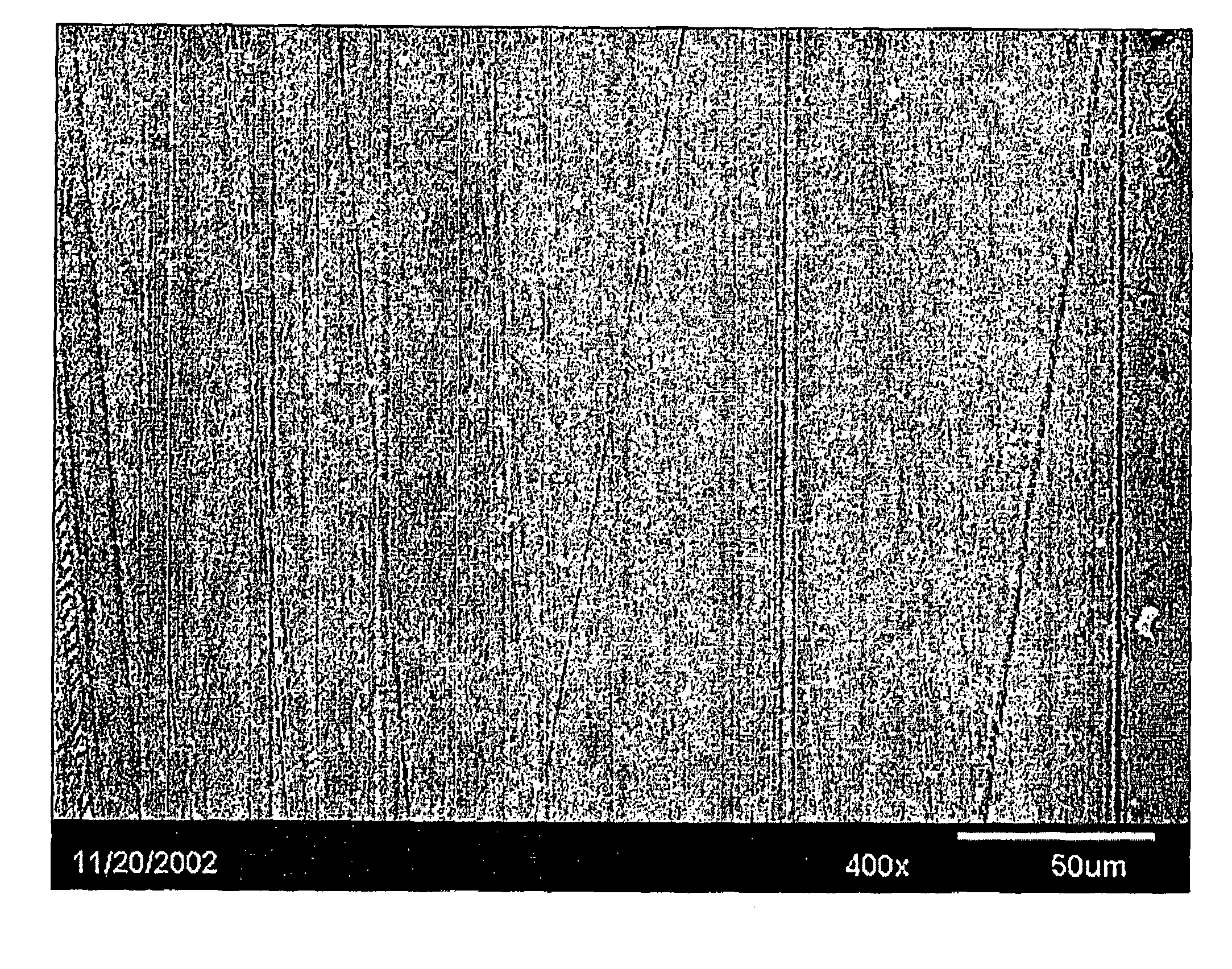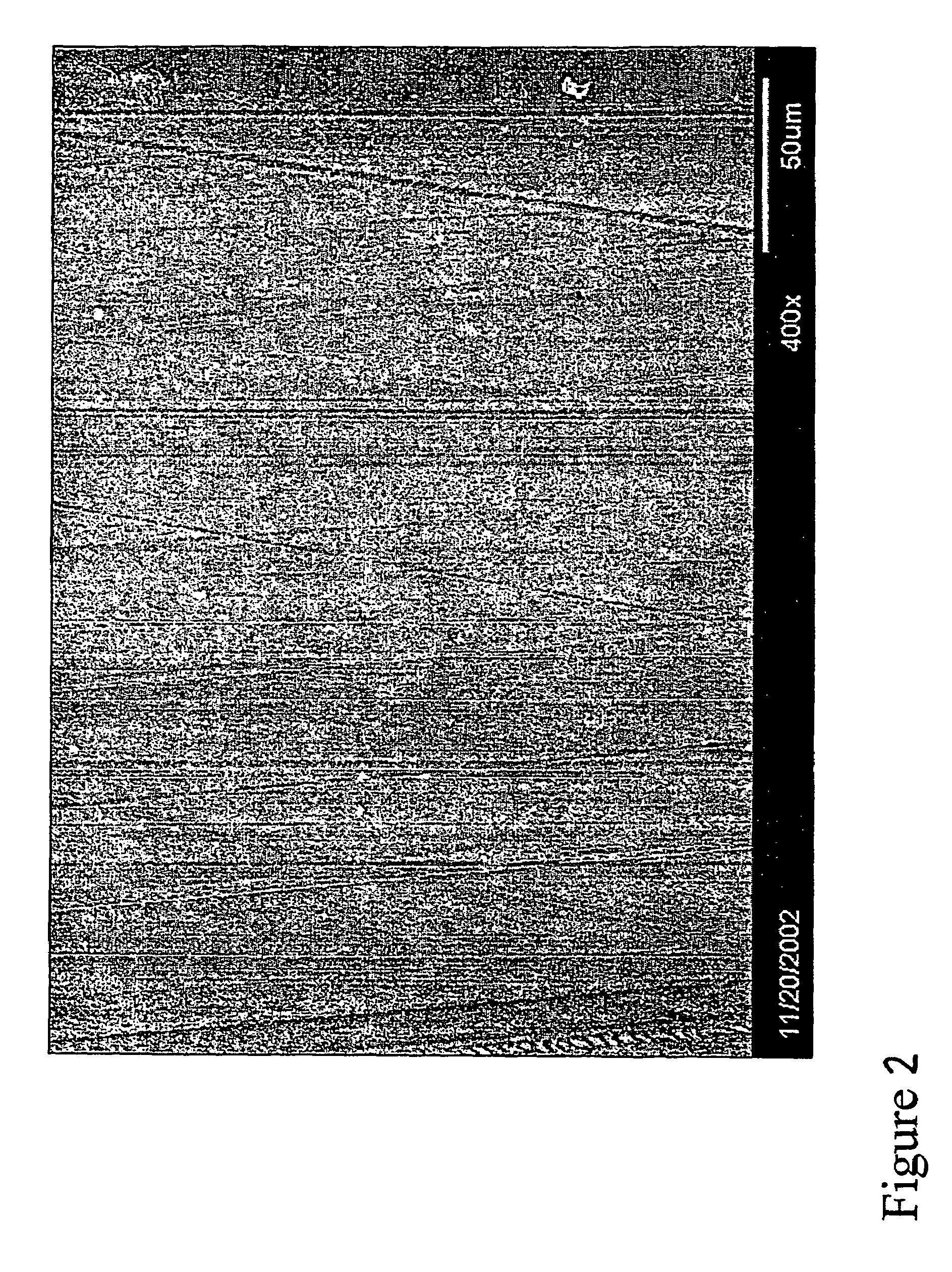Jettable compositions
a composition and jet technology, applied in the field of compositions, can solve the problems of limited application, limited use of aqueous inks, early jet deposition heads based on bubblejet technology, etc., and achieve the effect of preventing the long-term corrosion of the piezo print head
- Summary
- Abstract
- Description
- Claims
- Application Information
AI Technical Summary
Benefits of technology
Problems solved by technology
Method used
Image
Examples
examples 9-12
3D Printing Application Using Powders as Receiving Substrates
[0153]Mechanical test specimens were built using the following procedure.[0154]1. A layer of the appropriate powder (500 μm) was spread on a metal substrate.[0155]2. The appropriate resin was jetted onto the powder using a Microfab single jet head heated to 70° C., in a pattern consisting of lines spaced laterally by 250 μm, at a density given below. The pattern was then cured by exposure to UV light (4 W, UVA, 120 mJ / cm2)[0156]3. A further layer of powder (300 μm) was spread over the previous layer, and step 2 repeated.[0157]4. Step 4 was repeated 3 times. The article was removed from the free powder, and tensile properties were measured using Stable Micro Systems TA-HDi Texture Analyser, test speed 0.08 mm / s, grip distance 55 mm.
[0158]Four tests were carried out (Examples 9 to 12) and the parameters of the test and the properties of the resulting samples are shown in Table 5.
[0159]
TABLE 5TensileElongationDropletsExam-Pow...
example 13
Jettable Composition:
[0167]The following components were mixed by tumbling in a glass bottle for 2 hours, under yellow light conditions.
[0168]
UVR610550gUVR600035gCAP30110gUVI 69765gStabilizer BDMA0.1g
[0169]The liquid resin had following properties:[0170]Viscosity (Brookfield viscometer / rate 100 rpm): 70 mPas / 25° C.; 8 mPas / 70° C.[0171]Surface tension: 42 dynes / cm
[0172]The above UV curable composition was deposited on a test substrate with a specific pattern using a single piezoelectric jet printer head from Microfab Technologies Inc, Plano, Tex., USA. The printhead was heated to 70° C. under the following parameters:[0173]Printhead Scan rate was 20 mm / second[0174]The drop density was 150 droplets / mm with a line space of 0.25 mm
example 14
[0175]Using the jettable toughened, stabilised composition of Example 13, two overlapping lines of droplets were deposited as set out in Example 13 onto a polypropylene carrier sheet at a drop density of 150 droplets / mm with a line space of 0.25 mm and UV cured under a 4 W UVA lamp with a curing energy of 120 mJ / cm2. Where a two layer deposit is formed, the second layer is deposited on the first layer and cured under identical conditions.
[0176]A one-layer specimen and a two-layer specimen were examined using the SIEM method (Speckle Interferometry with Electron Microscopy). SIEM is a micro / nano-scale technique that is able to perform full field displacement mapping over a region of only a few microns in diameter. First, a random speckle pattern of nanoscale gold particles, which serve as displacement gauges, is deposited on a specimen surface. The specimen is placed under a load and the nanospeckle patterns before and after deformation of the specimen as a result of the load are rec...
PUM
| Property | Measurement | Unit |
|---|---|---|
| temperature | aaaaa | aaaaa |
| surface tension | aaaaa | aaaaa |
| temperatures | aaaaa | aaaaa |
Abstract
Description
Claims
Application Information
 Login to View More
Login to View More - R&D
- Intellectual Property
- Life Sciences
- Materials
- Tech Scout
- Unparalleled Data Quality
- Higher Quality Content
- 60% Fewer Hallucinations
Browse by: Latest US Patents, China's latest patents, Technical Efficacy Thesaurus, Application Domain, Technology Topic, Popular Technical Reports.
© 2025 PatSnap. All rights reserved.Legal|Privacy policy|Modern Slavery Act Transparency Statement|Sitemap|About US| Contact US: help@patsnap.com



